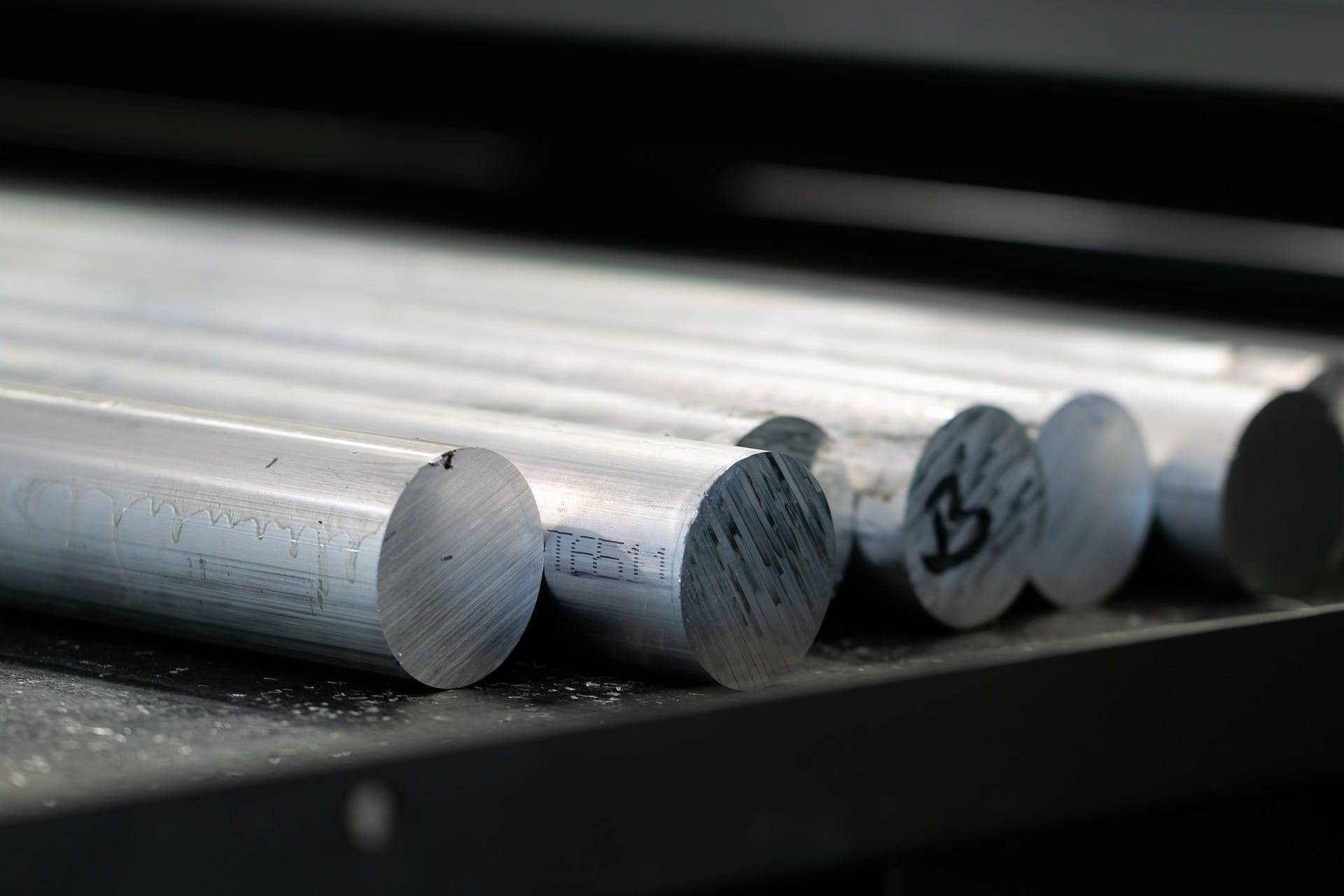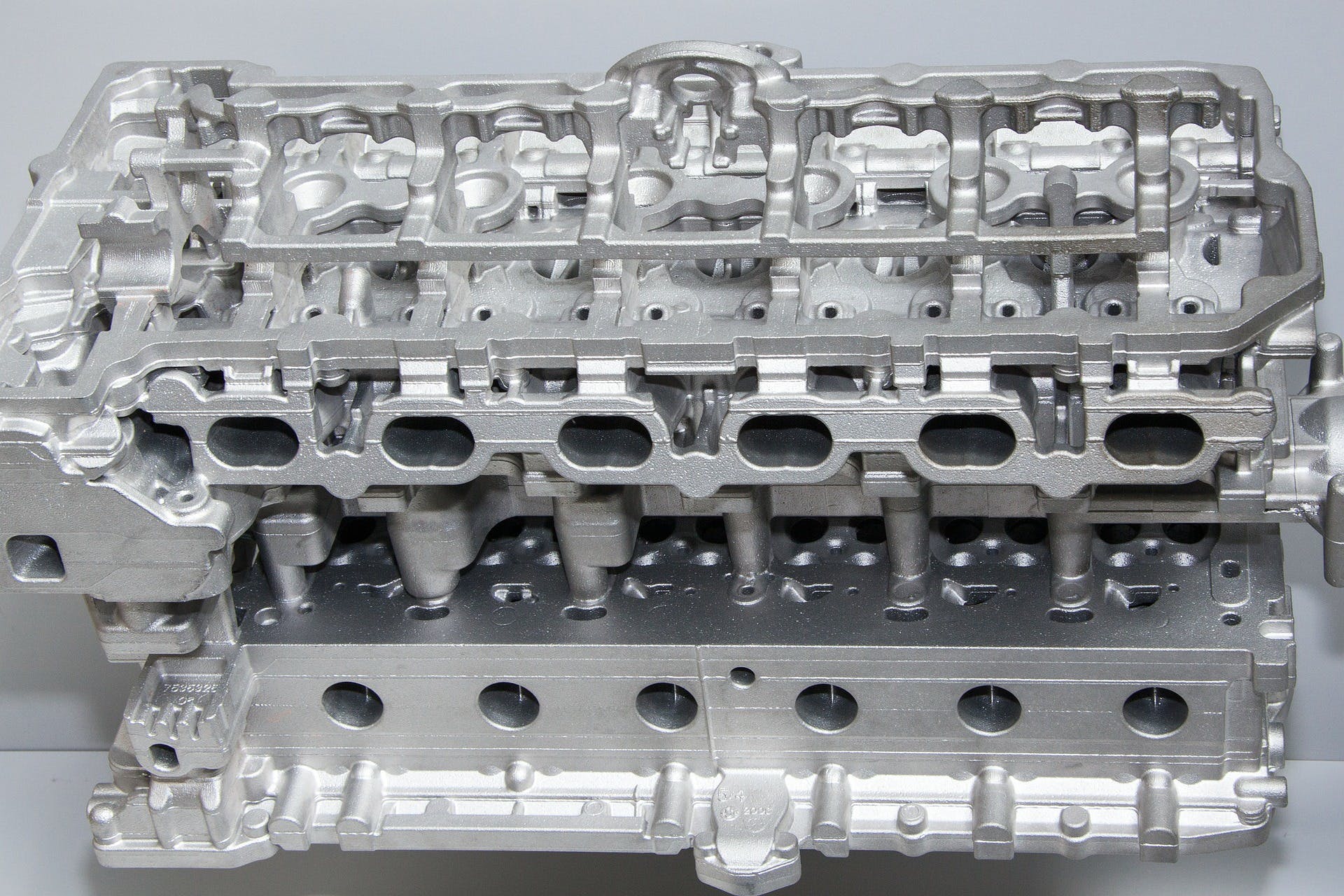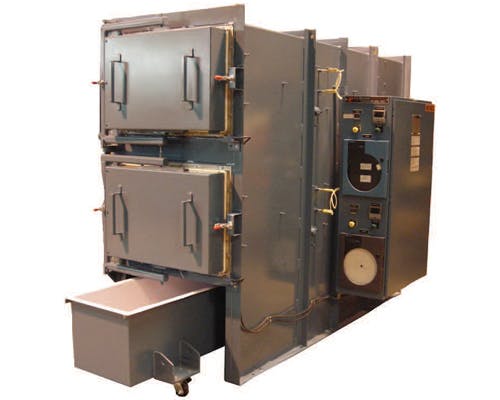If you own a manufacturing business that produces aluminum parts that require heat treatment, it’s important that you use the right furnace for the job. In order to know which furnace is best for you, you need to know the exact type of heat treatment that your products are going to require.
The most common heat treatments are annealing, natural aging, artificial aging, solution heat treatment, and aluminum homogenizing. This guide is intended to teach you all you need to know about that last process: aluminum homogenizing. If you’d like to know more about the specifics of all the other processes, check out our article on types of aluminum heat treatments.
What Is Aluminum Homogenizing?

The term “homogenization” refers to the process of making things more uniform or similar, and that is essentially what is done in the process of aluminum homogenizing. The aluminum part is heated to a temperature very near its melting point — between 900 and 1,000°F (480 and 540°C) — and then it is slowly cooled, causing the precipitating elements to become more evenly distributed throughout the material. This leads to a more workable part with a more uniform internal structure.
Homogenizing is actually a form of annealing known as diffusion, or uniform, annealing. Annealing can be defined as any process in which an alloy or metal is heated to a certain temperature for a specific length of time and then slowly cooled to produce the desired effect. Most often the purpose of annealing is to make it more suitable for the machining process, but it can also be used to reduce internal stresses so that cracking and deformation are less likely to occur.
It’s important to note that pure aluminum does not respond to heat treatment, and so the process of aluminum homogenizing can only be done with aluminum alloys that use zinc, copper, or a silicon and magnesium blend. Other alloys, such as manganese or magnesium alone cannot be effectively heat treated either.
The Process of Homogenization
Now that you’ve learned what the process of aluminum homogenizing entails, let’s take a closer look at what exactly the process requires.
Heating Process
The temperature required to induce homogenization is very near the melting point of the aluminum alloy. This can range depending on the other metals within the material but is typically not much higher than 1,200°F. This means that the metal will generally be heated up to a temperature nearing 1,000°F. If the temperature is too high, burning may occur, which will cause the part to become misshapen and prone to deterioration.
The length of heat preservation for aluminum homogenizing is very long, typically clocking in at somewhere between 10 and 15 hours depending on the thickness of the part.
Cooling Process
After the heating is complete, the cooling process begins. This often starts with a soak in a quench media which is followed by a cooldown period. The rate of cooling may vary depending on the elements present in the alloy. It’s also important to note that quenching aluminum alloys must be done almost immediately after the material has been removed from the furnace in order to maintain the form achieved during the heating process.
When alloys are originally cast, the process causes an uneven distribution of the aluminum and the other alloying elements. After the heating part of the homogenization process, the atoms of the material are allowed to more evenly redistribute themselves throughout the alloy. This process is completed during the slow cooling of the material.
Benefits of Aluminum Homogenizing

Unlike some other heat treatment processes, homogenizing doesn’t increase the strength or durability of a part. Instead, it is often used to facilitate further working or remove imperfections.
Create a More Workable Material
All forms of annealing are done in part to create a material that is more agreeable to machining. Homogenized aluminum is more flexible and easier to work with, making it a much more desirable material for producing whatever product you need.
Create a More Uniform Material
When aluminum alloys are created, the elements are unevenly distributed throughout the material. This means that certain areas of the aluminum alloy part will be considerably harder or softer than other areas, which is not a desirable trait for materials used in machining. Aluminum homogenizing helps redistribute the alloying elements more evenly throughout the part, resulting in a material that is consistent in its strength.
Allows for Other Heat Treatment Processes
Once the aluminum homogenizing process is complete, your material will be able to undergo other advantageous heat treatment processes, such as solution heat treatment. It can also be used in cold working, which is a way of increasing a metal’s strength without using heat.
Choosing the Right Furnace for Aluminum Homogenizing

When looking for the right furnace for aluminum homogenization there are a few important factors to consider. Chief among them is the fact that aluminum heat treatments almost always require extreme precision when it comes to temperature control, so the furnace you choose must be able to not only accurately determine temperature but also distribute heat extremely evenly.
L&L Special Furnace Co. Inc. has a number of different furnaces and ovens that are ideal for aluminum homogenization including the DRQ series, the ADC series, the XLE series, and more. These furnaces are specially configured to meet the specific needs of aluminum during the heat treatment process.
Conclusion
Hopefully, this guide has proven useful to you and you’re now more informed about the process of aluminum homogenization and all of the many benefits it offers. The process is simple enough, but because of the sensitive nature of aluminum heat treatment, it does require specialized equipment in order to be performed effectively. For additional information, check out our aluminum heat treatment guide.
In Need of an Aluminum Heat Treating Furnace?
If you’re in need of a high-quality aluminum heat treating furnace from a company you can trust, L&L Special Furnace Co. Inc. can help you out! Our furnaces offer the exact specifications that you need to ensure that your expensive materials never go to waste. Contact us today to request a quote.
